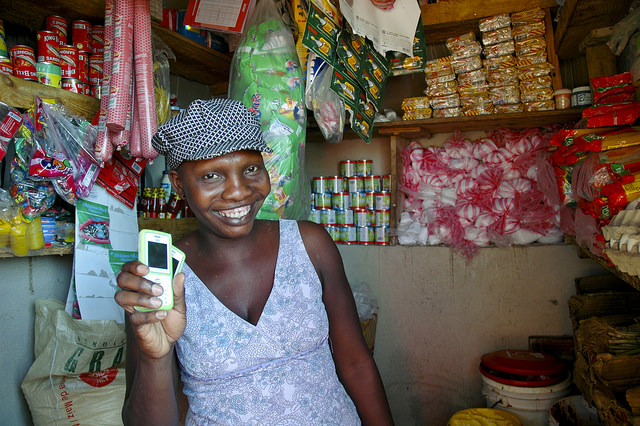Let us know what type of content you'd like to see more of. Fill out our three question survey.
Getting ICT Into the Hands of More Women
Mar 8, 2018
March 8 is International Women’s Day! To celebrate, we’ll look at a course on women and ICT inclusion developed by USAID Digital Inclusion, mSTAR, and Panoply Digital. Click here to access the course.
Gender and ICT Use
Mobile technologies are changing lives around the world, but not for everyone. Women are being excluded. There is a gender gap in women’s access to and use of information communication technologies (ICTs), preventing them and their communities from reaching their potential.
Globally a woman is 10 percent less likely to own a mobile phone than a man, but this is much higher in certain regions: 26 percent in South Asia, and 49 percent in rural areas in countries such as Pakistan. We also see similar trends in access to the internet: globally, a woman is 26 percent less likely to use mobile internet than a man, 50 percent less likely to be online than a man in the same education and income groupp, and in countries such as India only 8 percent of women use mobile internet. There is also a growing gender gap in usage: even if a woman does have access to a mobile or the internet, she tends to use them in different ways than men: less frequently, more use of basic services such as voice, much less use of more complex services such as mobile internet or mobile money.
With the development sector’s increasing use of mobile and ICT as a vehicle to deliver services, we run the risk of further exacerbating this global inequality if we use mobile services without understanding and addressing the digital gender divide.

It’s crucial that development practitioners not only understand the barriers in women’s access and adoption of digital tools, and the impact of the digital gender divide, but also understand how this affects their own work, and how they can ensure their digital programs are gender-sensitive.
Gender Inclusion eLearning Course
With this in mind, USAID Digital Inclusion and mSTAR worked with Panoply Digital, a London-based team of ICT4D, gender, and education tech specialists, to create an online training course for USAID staff, implementing partners, and other development practitioners. The course equips participants with an understanding of key gender and ICT considerations when designing and implementing projects and programs with digital components.
The 60-minute course follows two women, Rasheda from Bangladesh and Mary from the Democratic Republic of Congo, presenting gender and ICT issues from their eyes, using a persona-driven learning approach. There are four modules, focusing on:
-
the economic and social opportunities that access to, and use of, ICTs can bring
-
the current state of the gender gap for women’s access and use of mobile and mobile internet
-
the reasons behind this gender gap in ICT and the barriers that women face in terms of access and usage
-
practical and effective steps that development practitioners can take in their work to address these barriers, drawing on examples from other projects, including the need for more gender-disaggregated data through the USAID Gender and ICT Survey Toolkit
The course includes interactive learning activities and quizzes, as well as whiteboard animations, visual designs, and sound from communications and digital storytelling firm Big Blue Communications.
This course was funded by USAID through FHI360/ mSTAR. More information on additional programs can be found on USAID’s Digital Inclusion site, including USAID’s WomenConnect Challenge